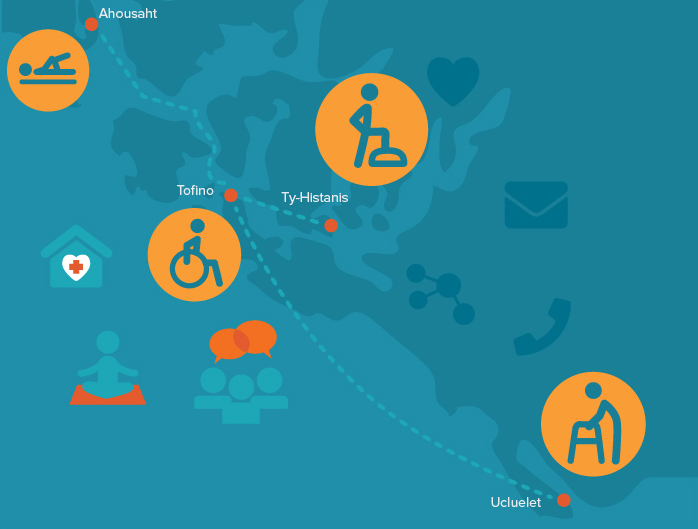Changing the Way Pain is Understood and Treated
Pain BC aims to enhance the well-being of all people living with pain through empowerment, care, education and innovation. This can't be done without changing the systems that people in pain rely on to live well. How do we do that?
- Advocating to government to create a provincial pain action plan and working with them to create it.
- Mobilizing people in pain to take action - for their own well-being and as champions for others who live with chronic pain.
- Improving pain assessment and treatment by providing training and support to health care providers.
- Working with rural and remote communities to build innovative new programs that make a difference in the lives of people in pain.
- Taking action to address the overdose crisis and the role pain plays in it.
We know complex problems can't be solved by one group alone -- improving the lives of people in pain requires collective action. Pain BC brings together people in pain and their families, health care providers, other non-profit organizations, government, researchers, and businesses to make significant and lasting change.
What We Do
What We Do

How We Do It

Case Studies
Case Study: BC Pain Research Network
The BC Pain Research Network brings together researchers from across the province to connect and collaborate with the aim of improving the lives of the 1 in 5 British Columbians living with pain.
The network is made up of nearly 90 investigators from a range of disciplines, including molecular biology, pharmaceutical sciences, clinical investigations, behavioural and social sciences, humanities, public health, and health services delivery, and grows out of a partnership between Pain BC and the University of British Columbia. The initial funding to develop the network was provided through support from UBC’s Research Excellence Clusters initiative and a Planning and Dissemination Grant from the Canadian Institutes of Health Research.
Pain BC will bring the perspectives of people in pain, health care providers, and policy makers into the network, to ensure these realities of pain are reflected in research.
To find out more about the BC Pain Research Network, go to www.bcpainresearch.ca.
Case Study: Group Physiotherapy for Remote Communities

People in pain can benefit from gentle movement programs and need access to physiotherapy. Those things are hard to find for people living in rural and remote parts of our province. The community of Tofino, on the remote west coast of Vancouver Island, identified a need to improve access to physiotherapy and movement programs. Pain BC worked with local yoga teachers, the Tofino Hospice Society, the Nu Chal Nath First Nation, local municipalities, the Clayoquot Biosphere Trust, and other local stakeholders to respond to this need.
First, we brought Neil Pearson, a renowned physiotherapist and pain educator, to Tofino to train local people in pain science and gentle movement. A local team, led by Island Health physiotherapist Carley Grigg, worked with Neil to create a program and to pilot it with 20 participants. The results were impressive; the program improved the quality of life of the participants. As one participant said, "I haven't walked this far in years!".
The program quickly spread, with local champions providing it in Tofino and Ucluelet, as well as Ahousaht, and Ty-Histanis, two First Nations communities that can only be accessed by boat.
The program is a low cost, low barrier way to improve access to physiotherapy and movement for people in pain in remote communities.
Pain BC is now training other physiotherapists to deliver the program in a variety of contexts across BC. While this kind of program often starts with a local need, Pain BC spreads the impact across the province through our network of partners.